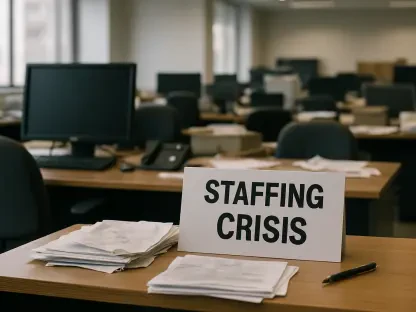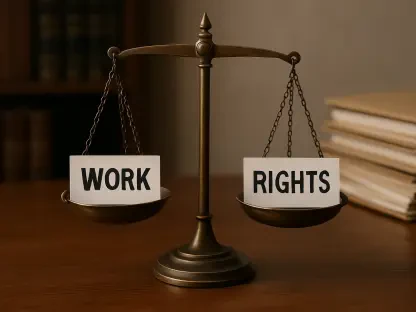In a move that has sent shockwaves through New Zealand, the Equal Pay Amendment Bill, passed in May under the urgency of the Coalition Government, has become a lightning rod for heated debate and widespread criticism, seen by many as a direct assault on women’s rights to fair compensation. This legislation, which alters long-standing pay equity frameworks, limits their ability to file claims, extinguishes ongoing cases, and denies back pay. Advocacy groups, workers, and concerned citizens have rallied against it, with the St Peter’s on Willis Social Justice Group emerging as a prominent voice of opposition. The controversy surrounding this Bill is not merely about wages but touches on deeper issues of fairness, democratic integrity, and societal values. What drives such fierce opposition? The reasons are layered, spanning procedural missteps, economic fallout, historical grievances, and ethical dilemmas, each fueling a growing sense of unease about the direction of gender equality in the nation.
Flawed Process and Democratic Integrity
The manner in which the Equal Pay Amendment Bill was enacted has drawn sharp criticism for its apparent disregard for democratic norms. Rushed through Parliament without adequate public consultation, the legislation sidestepped critical checks like a Regulatory Impact Statement and standard Cabinet protocols. Critics argue that this haste was a calculated effort to evade scrutiny, raising alarms about transparency and accountability in governance. Such procedural shortcuts are viewed as a breach of fundamental principles enshrined in the New Zealand Bill of Rights Act, undermining trust in the legislative process. The St Peter’s on Willis Social Justice Group has been vocal in condemning this approach, asserting that bypassing due process not only disrespects democratic values but also sets a troubling precedent for how future policies might be handled, especially those impacting vulnerable populations.
Beyond the procedural flaws, the lack of public input has amplified concerns about the government’s intentions behind the Bill. Many stakeholders, including advocacy groups and legal experts, contend that excluding community voices from the discussion prevented a balanced evaluation of the legislation’s impact. This exclusion is particularly galling for those who see pay equity as a cornerstone of social justice, as it stifles debate on an issue that affects millions. The absence of robust consultation has led to accusations that the government prioritized speed over substance, potentially hiding contentious aspects of the Bill from public view. This opacity has only deepened the controversy, as it suggests a willingness to sacrifice democratic engagement for political expediency, leaving many to question whether the process was deliberately designed to mute opposition and push through a divisive policy.
Disproportionate Harm to Women and Communities
A central pillar of the opposition to the Equal Pay Amendment Bill lies in its severe impact on women, especially those in low-wage, female-dominated sectors. By dismantling mechanisms for pursuing pay equity claims, the legislation effectively blocks pathways to fair compensation for countless workers who often serve as primary breadwinners for their families. This change hits hardest among Māori and Polynesian women, who already face systemic barriers, exacerbating existing disparities and entrenching economic inequality. Critics highlight that such measures not only devalue women’s contributions but also ripple outward, contributing to broader social challenges like child poverty, which can hinder opportunities for future generations. The Bill, in this light, is seen as a regressive step that undermines the very communities it should protect.
Equally troubling is the broader societal toll of these restrictions on pay equity. When women in essential yet underpaid roles—such as caregiving or education—are denied fair wages, the fabric of community well-being frays. Opponents argue that the legislation ignores the critical role these workers play in sustaining families and local economies, creating a vicious cycle of hardship. The St Peter’s on Willis Social Justice Group has emphasized that this policy disproportionately burdens marginalized groups, amplifying historical injustices and limiting access to resources needed for upward mobility. This targeted impact has fueled outrage among advocates who see the Bill as not just an economic issue but a profound failure to uphold social equity, prompting calls for urgent reconsideration to mitigate the damage to vulnerable populations.
Economic Fallout and Policy Contradictions
The economic ramifications of the Equal Pay Amendment Bill have emerged as a significant source of contention, with estimates suggesting it could strip a staggering $12.8 billion from New Zealand’s economy. Critics warn that devaluing women’s work through this legislation will slow national growth, reduce tax revenues, and strain public resources at a time when economic stability is already under pressure. Treasury warnings about a weakening economy further underscore the risks of such a policy, painting it as a shortsighted move that contradicts the government’s own rhetoric about fostering prosperity. By prioritizing austerity over investment in equitable pay, the Bill is seen as a misstep that could have long-lasting negative effects on financial health across sectors.
Adding to the economic critique is the perception that the Bill aligns with a broader agenda of wage suppression. Combined with other measures like the repeal of the Fair Pay Agreement Act, it signals to many a systemic effort to lower labor costs at the expense of workers’ rights. This approach appears to clash with public expectations for policies that bolster economic resilience, especially for those in undervalued roles. Opponents argue that reducing women’s earning potential not only harms individual households but also dampens consumer spending, a key driver of growth. The resulting economic contraction could exacerbate existing challenges, making the legislation a focal point of debate over whether fiscal conservatism should take precedence over equitable development, further intensifying public and expert scrutiny.
Historical Context and Persistent Setbacks
Examining the Equal Pay Amendment Bill through a historical lens reveals a pattern of regression that has deepened public discontent. Critics point to past actions by the National Party, such as the repeal of the Employment Equity Act in 1990 and efforts to restrict pay equity claims following the 2017 Kristine Bartlett case, as evidence of consistent resistance to gender wage parity. The current Bill is framed as the latest chapter in a decades-long struggle, representing not an isolated decision but a deliberate rollback of hard-won gains. This historical backdrop fuels frustration among advocates who see the legislation as a culmination of efforts to place fiscal priorities above social justice imperatives.
The recurring nature of these setbacks adds a layer of urgency to the current controversy, as it suggests an entrenched opposition to meaningful progress on pay equity. For many, the Bill symbolizes a refusal to learn from past mistakes, ignoring landmark cases and advocacy that have highlighted the need for systemic change. The St Peter’s on Willis Social Justice Group has drawn attention to this trend, arguing that each rollback erodes trust in the government’s commitment to equality. This historical perspective resonates with a wide audience, from workers to policymakers, who fear that without intervention, such policies will continue to hinder advancements, perpetuating a cycle of inequality that future generations will inherit.
Ethical Dimensions and Moral Critique
A distinctive aspect of the opposition to the Equal Pay Amendment Bill comes from its moral and ethical implications, which have struck a chord with many. The St Peter’s on Willis Social Justice Group, for instance, grounds its critique in religious principles, citing biblical teachings on justice and compassion as a call to reject policies that harm the marginalized. By framing the Bill as a betrayal of fundamental values, they argue that it fails to uphold the societal duty to protect fairness and dignity. This ethical standpoint adds depth to the debate, merging legal and economic objections with a profound appeal to conscience that resonates beyond traditional advocacy circles.
This moral critique extends to broader civil rights rhetoric, with references to historical calls for justice amplifying the argument against the legislation. Opponents contend that devaluing women’s work is not just an economic misstep but a stain on the nation’s ethical fabric, undermining the principles of equity that should guide policy. Such perspectives challenge the government to consider the human cost of its decisions, beyond mere fiscal calculations. The blending of spiritual and social justice arguments has broadened the coalition of voices opposing the Bill, uniting diverse groups under a shared belief that compassion must inform governance, making this dimension a powerful driver of public discourse.
Questioning Government Justifications
Scrutiny of the government’s rationale for the Equal Pay Amendment Bill has further stoked controversy, as many find the stated goals unconvincing. Presented as a means to enhance legislative quality and reduce costs, the justification is widely seen as a pretext for prioritizing financial concessions to specific industries, such as tobacco, and tax breaks for landlords over women’s economic rights. This perceived misalignment of priorities has eroded public trust, with critics arguing that the reasoning masks a deeper agenda to cut labor protections. The disconnect between the government’s claims and the Bill’s apparent outcomes has become a focal point of contention.
Moreover, the skepticism surrounding these justifications reflects a broader concern about the precedent this policy sets for workers’ rights across all sectors. If cost-cutting trumps equity in this instance, many fear it could embolden similar erosions of protections elsewhere, threatening hard-fought labor standards. The St Peter’s on Willis Social Justice Group has highlighted this risk, suggesting that the Bill’s true aim is to serve narrow interests rather than the public good. This critique has galvanized opposition, as stakeholders from various fields question whether the government’s fiscal strategies are worth the social and economic trade-offs, ensuring that the debate remains a critical issue in national conversations.
Reflecting on a Path Forward
Looking back, the storm surrounding the Equal Pay Amendment Bill revealed deep fissures in New Zealand’s approach to gender equity and governance. The procedural lapses, economic damages, historical regressions, and ethical breaches that defined the opposition painted a picture of a policy that many believed strayed from societal values. The impassioned arguments from groups like St Peter’s on Willis Social Justice Group underscored a collective demand for fairness that could not be ignored. Moving ahead, the focus must shift to actionable remedies—reinstating pay equity mechanisms, ensuring transparent legislative processes, and prioritizing economic policies that uplift rather than diminish vulnerable groups. Engaging diverse stakeholders in meaningful dialogue will be crucial to rebuild trust and forge a future where justice in compensation is not just an ideal but a tangible reality for all.









